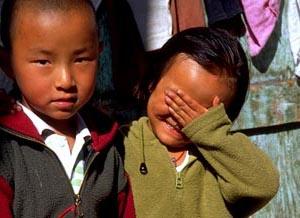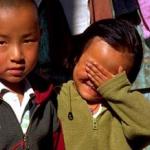About Bhutan
Facts about the tiny Himalayan kingdom of Bhutan
Bhutan, which will move to a democratic government in 2008 after 100 years of monarchy, lies nestled in the Himalayas between India and China with one of the world's smallest and least developed economies.
Most of its largely Buddhist population live by subsistence farming, animal husbandry and forestry. A mainstay of its farm output are hot peppers used in the national dish of melted cheese and rice called ema datse.
Around 100,00 ethnic Nepalis who claim Bhutanese citizenship have been living as refugees in United Nations refugee camps in Nepal since 1991.
Population: Around 600,000
Adult Literacy: Not available
Infant Mortality Rate: 70 per 1,000 live births
Population Below Poverty Line: not available
GDP Per Capita: 797 dollars in 2003
Public Health Expenditure: 4.1 percent of GDP in 2002
Physicians Per 100,000 Population: 5
Political Chronology:
1907: Britain recognises the monarchy on December 17. The day is celebrated as the National Day of Bhutan, which is also known as the Land of the Thunder Dragon.
1971: The United Nations recognises Bhutan as a sovereign state.
1972: Jigme Singye Wangchuk becomes the world's youngest monarch and Bhutan's fourth hereditary king at the age of 17 years after his father Jigme Dorji dies. He attended Oxford University.
1990: King Wangchuck expels 100,000 ethnic Nepali Bhutanese, drawing condemnation from human rights groups and the UN.
1999: The country allows television broadcasts for the first time, following people's demands that they be able to watch football's World Cup.
2005: On March 26, the king distributes a draft of Bhutan's first constitution, asking his people to review the paper.
2005: Less than nine months later, Wangchuck promises to abdicate power in 2008 when monarchy will be 100 years old.
Bhutan's proposed parliament is to include a 75-member national assembly and a 25-member national council with the king as head of state.
* * * * *
 ThingsAsian
ThingsAsian















